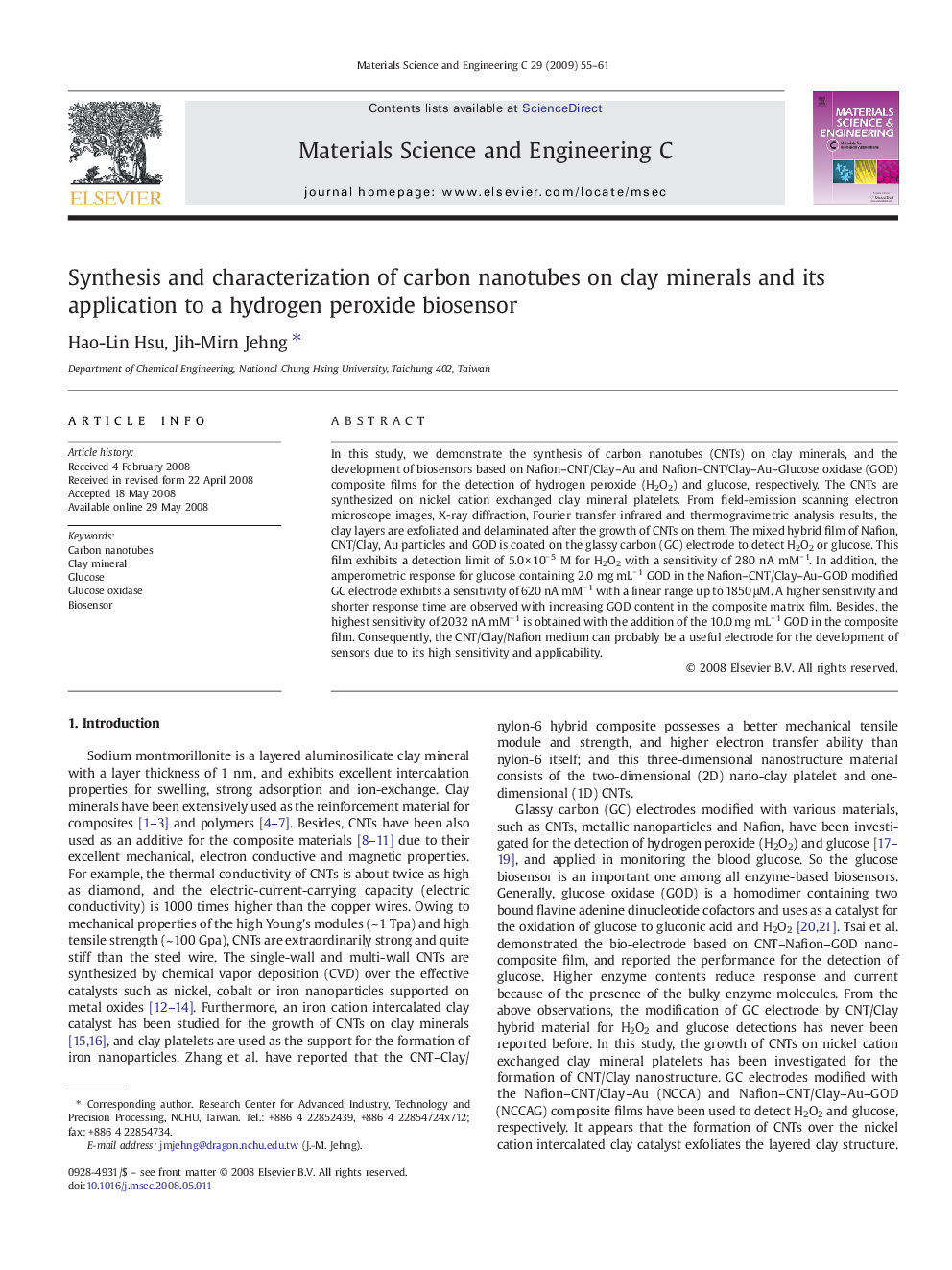| کد مقاله | کد نشریه | سال انتشار | مقاله انگلیسی | نسخه تمام متن |
|---|---|---|---|---|
| 1430475 | 987204 | 2009 | 7 صفحه PDF | دانلود رایگان |

In this study, we demonstrate the synthesis of carbon nanotubes (CNTs) on clay minerals, and the development of biosensors based on Nafion–CNT/Clay–Au and Nafion–CNT/Clay–Au–Glucose oxidase (GOD) composite films for the detection of hydrogen peroxide (H2O2) and glucose, respectively. The CNTs are synthesized on nickel cation exchanged clay mineral platelets. From field-emission scanning electron microscope images, X-ray diffraction, Fourier transfer infrared and thermogravimetric analysis results, the clay layers are exfoliated and delaminated after the growth of CNTs on them. The mixed hybrid film of Nafion, CNT/Clay, Au particles and GOD is coated on the glassy carbon (GC) electrode to detect H2O2 or glucose. This film exhibits a detection limit of 5.0 × 10− 5 M for H2O2 with a sensitivity of 280 nA mM− 1. In addition, the amperometric response for glucose containing 2.0 mg mL− 1 GOD in the Nafion–CNT/Clay–Au–GOD modified GC electrode exhibits a sensitivity of 620 nA mM− 1 with a linear range up to 1850 μM. A higher sensitivity and shorter response time are observed with increasing GOD content in the composite matrix film. Besides, the highest sensitivity of 2032 nA mM− 1 is obtained with the addition of the 10.0 mg mL− 1 GOD in the composite film. Consequently, the CNT/Clay/Nafion medium can probably be a useful electrode for the development of sensors due to its high sensitivity and applicability.
Journal: Materials Science and Engineering: C - Volume 29, Issue 1, 1 January 2009, Pages 55–61